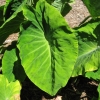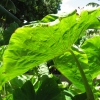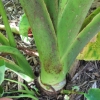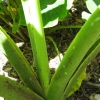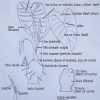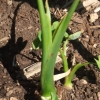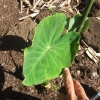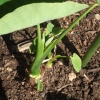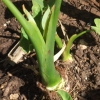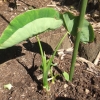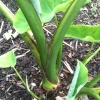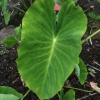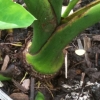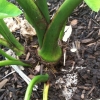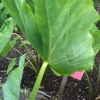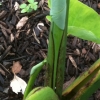Use As Food
Chiefly for poi.
Distribution
Found occasionally on Kaua‘i and in South Kona, Hawai‘i, where it was usually grown under upland, dryland culture (māla).
General Characteristics
Short, moderately spreading, stocky, maturing within 9 to 12 months, producing from 5 to 10 ‘ohā; distinguished by short, stocky growth and dark green Hā (Petiole) with distinct, narrow reddish edges (lihi).
Ha (Petiole)
45 to 60 cm. long, very very green with a distinct, narrow reddish edge (lihi), white at kōhina (base).
Lau or Lu'au(Leaf Blade)
35 to 45 cm. long, 25 to 30 cm. wide, 25 to 35 cm. from tip to base of sinus (māwae), narrowly egg-shaped (ovate), slightly concave (curve inward), fairly crinkled, dark green; piko light yellowish; round leaf section (lobes) acute with wide lihi māwae (sinus).
'I'o kalo (Corm)
Flesh white with yellowish fibers; skin cream-colored, sometimes reddish-purple along the leaf-scar rings.
Pua (Flower)
Hā (peduncle) light green; flower cover (spathe) 21 to 24 cm. long, the lower tubular portion 3 to 4 cm. long, loosely rolled, light green with tinge of purple at the kōhina (base). The upper portion is deep yellow, open near the constriction (skinny part of flower) even when young; spadix (spike of flower) 7 to 8 cm. long, the sterile appendage (tip of flower's spike) 8 to 9 mm. long.
Remarks
The thin red lihi of the kalo grown at Waimea Valley is much more distinct than the lihi of the kalo grown at Maui Nui Botanical Garden. This kalo is good to experiment with growing along the coastline to test if its name means it can grow in low land areas where salty sea water intrudes.

